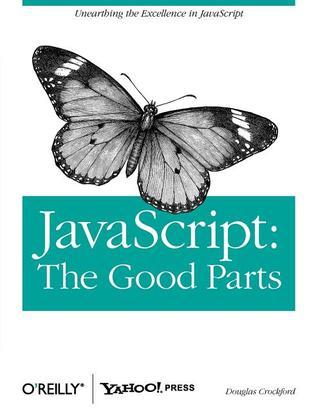the best books for developers

Topics: JavaScript
By Douglas Crockford
9780596517748
"JavaScript: The Good Parts" by Douglas Crockford is like your trusty guide to the better side of JavaScript. It's like having a superhero show you how to use JavaScript for good, not evil.
First, it talks about the good parts of the language – the stuff that makes JavaScript awesome. You'll learn about functions, objects, and closures – like the secret sauce of JavaScript.
Then, it's all about arrays and regular expressions. You'll see how to use them to make your code efficient and powerful.
The book also dives into how to avoid the bad parts of JavaScript. It's like learning to recognize the villains in the coding world and keeping them out of your scripts.
Crockford talks about how to write clean, beautiful code that's easy to maintain. It's like the art of making your code a joy to read.
And there's a section on inheritance and how to create objects in JavaScript. It's like building your own army of code minions that do your bidding.
Don't forget about the good practices – like how to name your variables and functions so they make sense and how to use whitespace for clarity.
Crockford also talks about handling errors gracefully and debugging your code effectively. It's like giving your code a suit of armor against bugs.
In a nutshell, this book is your ticket to becoming a JavaScript wizard, using the language's best features and avoiding its pitfalls. Whether you're a newbie or a seasoned developer, "JavaScript: The Good Parts" is like a treasure map to the gold mine of JavaScript programming.
Chapter 1: Good Parts
In the opening Chapter, Crockford introduces the concept of good parts in JavaScript. He emphasizes the importance of identifying and using the language's best features while avoiding its problematic aspects. This chapter sets the stage for the exploration of JavaScript's strengths.
Chapter 2: Syntax
Chapter 2 delves into JavaScript syntax, highlighting both its elegant and problematic aspects. Crockford discusses essential syntax elements, including statements, variables, operators, and objects. He provides guidance on writing clean and readable code by focusing on the good parts of JavaScript syntax.
Chapter 3: Objects
In this chapter, Crockford explores JavaScript objects, a fundamental concept in the language. He explains how to create objects, define properties and methods, and work with object literals. Readers gain insights into harnessing the power of objects while avoiding common pitfalls.
Chapter 4: Functions
Chapter 4 is dedicated to functions, one of JavaScript's most powerful features. Crockford discusses function declaration, expression, scope, and closures. He emphasizes the significance of closures in creating efficient and maintainable code and demonstrates their practical use.
Chapter 5: Inheritance
This chapter delves into inheritance in JavaScript, providing an alternative to traditional class-based inheritance. Crockford introduces prototypes and demonstrates how to leverage them to create objects and share properties and methods. Readers learn how to implement inheritance and code reuse effectively.
Chapter 6: Arrays
Chapter 6 focuses on JavaScript arrays and their strengths and weaknesses. Crockford explores array literals, methods, and common array operations. He also highlights the dangers of using JavaScript's loose typing and the importance of using arrays judiciously.
Chapter 7: Regular Expressions
Regular expressions are the subject of this chapter, offering a powerful tool for pattern matching and text processing in JavaScript. Crockford explains the syntax of regular expressions and provides practical examples of their usage. He underscores their value in data validation and manipulation.
Chapter 8: Methods
Chapter 8 discusses JavaScript's method invocation patterns, including the function, method, constructor, and apply patterns. Crockford explores each pattern's characteristics and best practices for their use, enabling readers to write clean and efficient code.
Chapter 9: Style
In this chapter, Crockford offers advice on coding style and conventions. He discusses naming conventions, indentation, and whitespace usage, emphasizing the importance of consistent and readable code. Readers gain insights into adopting a clean coding style.
Chapter 10: Beautiful Features
The final chapter highlights some of the beautiful features of JavaScript. Crockford identifies specific language features and patterns that contribute to elegant and expressive code. He encourages readers to appreciate the beauty of JavaScript while being mindful of its pitfalls.